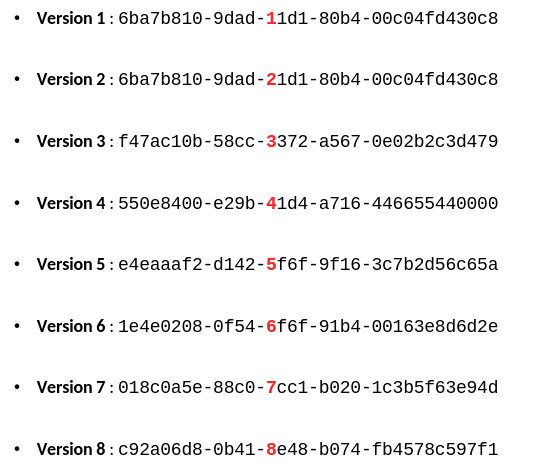GUID/UUID Generator
This tool allows you to easily generate GUIDs/ UUIDs for your projects or any other purpose. Simply use the default GUID/UUID generated on page load or generate multiple GUIDs/UUIDs as needed.
Your GUID:
Generate More?
Please exercise caution when using these GUIDs. Their uniqueness and suitability are not guaranteed or assured in any way. Use at your own discretion.
What is a GUID/UUID?
A GUID is a 128-bit identifier used in software applications to ensure uniqueness across different systems and environments.
How are GUIDs generated?
GUIDs are generated using random numbers combined with predefined formats to ensure their uniqueness.
Types of UUID
| Version | Generation Method | Key Features |
|---|---|---|
| Version 1 | Generated using timestamp and node ID (e.g., MAC address) | Includes time and node-specific information |
| Version 2 | Similar to V1, but includes POSIX UID/GID | Used for security domain identification |
| Version 3 | Generated using MD5 hash of namespace and name | Deterministic; same inputs produce the same UUID |
| Version 4 | Random or pseudo-random numbers | Most common; highly unique |
| Version 5 | Generated using SHA-1 hash of namespace and name | Similar to V3 but uses stronger hashing |
| Version 6 | Reordered timestamp and random data | Improves database indexing by preserving timestamp order |
| Version 7 | Generated using Unix epoch timestamp and random data | Optimized for time-based ordering |
| Version 8 | Custom format defined by implementers | Provides flexibility for unique use cases |
How to Identify UUID Version
The version of a UUID can be determined by looking at the 13th hexadecimal digit (first digit of the 7th byte) in the UUID string. For example:
UUID Structure

UUID Format
A UUID is typically represented in the following format:
8-4-4-4-12Example:
123e4567-e89b-12d3-a456-426614174000